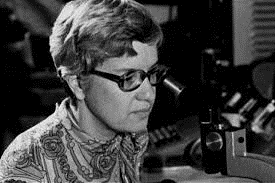Her work is a continuation of a long list of women who have dedicated their lives to calculating the trajectories of celestial bodies, such as Hypatia (c. 370-c. 416), Sophia Brahe (1556-1643), Maria Cunitz (1610-1664), Nicole Lepaute (1723-1788), Caroline Herschel (1750-1848), an astronomer who discovered eight comets, and Henrietta Swan Leavitt (1868-1921), an American astronomer who was part of the so-called Harvard Computers. A group of women who made significant advances in the classification of astronomical data from the "Harvard Observatory" from 1877 to 1919, led by Charles Pickering (1846-1919). Among these women were Williamina Fleming (1857-1911), Annie Jump Cannon (1863-1941), and Antonia Maury (1866-1952).
She has been preceded by other relevant scientists such as Margaret Cavendish (a prolific author who wrote 10 books on natural philosophy, now considered physics), the Englishwoman Katherine Boyle Lady Ranelagh (1615-1691), chemist Marie Anne Paulze (1758-1836), known as Mme. Lavoisier in France, chemist Julia Lermontova (1847-1919), a pioneer of the periodic table; from the genealogy of women scientists who trace their origins to Marie-Sklodowska Curie, who worked with radioactivity and elements of the periodic table; by Lise Meitner (1878-1968), an Austrian scientist who contributed to the discoveries of the element protactinium and nuclear fission, and equally by the engineer, mathematician, and physicist Englishwoman Hertha Ayrton (1854-1923).
Some contemporary scientists include Marietta Blau (1894-1970); mathematicians Emmy Noether (1882-1935) and Hilda Geiringer (1893-1973); Nobel Laureate in Physics Marie Goeppert-Mayer (1906-1972); the American physicist Chien-Shiung Wu (1912-1997), born in China, an expert in radioactivity; and Rosalind Elsie Franklin (1920-1958), a British chemist and crystallographer whose work was fundamental to understanding the molecular structures of DNA, RNA, viruses, coal, and graphite.
Other contemporary astronomers of Vera Rubin include: Cecilia Payne (1900-1979); Ida Noddack (1896-1978); Margaret Harwood (1885-1979); Joan Feynman (1927-2020); Maria Assumpció Català i Poch (1925-2009); Antonia Ferrín Moreira (1914-2009); Francesca Figueras (1958); Sandra Moore Faber (1944), physicist and PhD in astronomy, dedicated to the study of galaxy formation and evolution; Margaret Burbidge (1919-2020); Nancy Grace Roman (1925-2018); and Maud Worcester Makemson (1891-1977), a specialist in archaeoastronomy who led the Vassar College Observatory from 1936 to 1957 and was also Vera Rubin's astronomy professor. Rubin was also a student of Martha Stahr Carpenter (1920-2013), the only professor at Cornell University specialising in galaxy dynamics.
